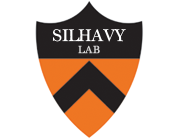P pilus assembly motif necessary for activation of the CpxRA pathway by PapE in Escherichia coli
Type
P pilus biogenesis occurs via the highly conserved chaperone-usher pathway, and assembly is monitored by the CpxRA two-component signal transduction pathway. Structural pilus subunits consist of an N-terminal extension followed by an incomplete immunoglobulin-like fold that is missing a C-terminal seventh beta strand. In the pilus fiber, the immunoglobulin-like fold of each pilin is completed by the N-terminal extension of its neighbor. Subunits that do not get incorporated into the pilus fiber are driven "OFF-pathway." In this study, we found that PapE was the only OFF-pathway nonadhesin P pilus subunit capable of activating Cpx. Manipulation of the PapE structure by removing, relocating within the protein, or swapping its N-terminal extension with that of other subunits altered the protein's self-associative and Cpx-activating properties. The self-association properties of the new subunits were dictated by the specific N-terminal extension provided and were consistent with the order of the subunits in the pilus fiber. However, these aggregation properties did not directly correlate with Cpx induction. Cpx activation instead correlated with the presence or absence of an N-terminal extension in the PapE pilin structure. Removal of the N-terminal extension of PapE was sufficient to abolish Cpx activation. Replacement of an N-terminal extension at either the amino or carboxyl terminus restored Cpx induction. Thus, the data presented in this study argue that PapE has features inherent in its structure or during its folding that act as specific inducers of Cpx signal transduction.

